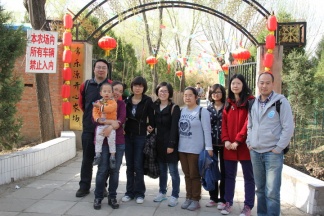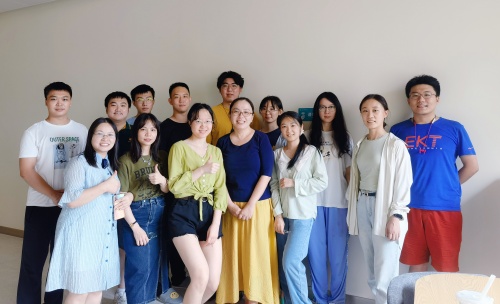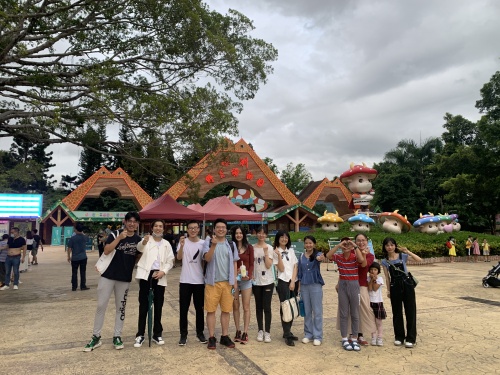Difference between revisions of "Research underconstruction"
From atmoschem
| Line 2: | Line 2: | ||
Team members: [[Nan LI]], [[Yue JIAN]], [[Heng TIAN]], [[Hansen CAO]], [[Tzung-May FU]] | Team members: [[Nan LI]], [[Yue JIAN]], [[Heng TIAN]], [[Hansen CAO]], [[Tzung-May FU]] | ||
| − | {{Box|type=l_red_light|text=Carbonaceous aerosols in China: top-down constraints on primary sources and estimation of secondary contribution}} | + | {{Box|type=l_red_light|text=Carbonaceous aerosols in China: top-down constraints on primary sources and estimation of secondary contribution |
| + | {{HideProject| | ||
| + | {{:People}} | ||
| + | }} | ||
| + | }} | ||
{{HideProject| | {{HideProject| | ||
We simulated elemental carbon (EC) and organic | We simulated elemental carbon (EC) and organic | ||
| Line 50: | Line 54: | ||
Publication: Fu et al. (2012) | Publication: Fu et al. (2012) | ||
| + | {{:People}} | ||
}} | }} | ||
Revision as of 09:11, 6 May 2014
Contents
- 1 Sources of Chinese air pollutants
- 2 Current members
- 3 Alumni
- 4 Current members
- 5 Alumni
- 6 Volatile organic compounds (VOCs): global and regional emissions and impacts
- 7 Secondary organic aerosols (SOA)
- 8 Chemistry-Climate interactions and Chemistry-Climate Model (CCM) development
- 9 Measurements of Chinese PM2.5 composition
- 10 Air-sea exchange of organic materials
- 11 Long-range transport of pollutants
Sources of Chinese air pollutants
Team members: Nan LI, Yue JIAN, Heng TIAN, Hansen CAO, Tzung-May FU
Current members
- Tzung-May FU 傅宗玫: Group Leader
- Jiongkai CHEN 陈炯恺: Master student
- Yiheng CHEN 陈以恒: PhD student (joint program with HK UST)
- Wai-Chi CHENG 郑伟智: Research Assistant Professor
- Ao DING 丁傲: Research assistant
- Hanrui DUAN 段涵睿: PhD student (joint program with HK Chinese U)
- Huiran FENG 冯汇然: PhD student
- Tianci JIANG 姜天赐: Master student
- Yue HOU 侯岳: Master student
- Yumin LI 李钰敏: PhD student (joint program with HK UST)
- Dongli LIU 刘冬丽: Group secretary
- Jiajia MO 莫佳佳: Research Assistant
- Xingyu NAN 南星宇: Master student
- Wei TAO 陶玮: Research Assistant Professor
- Xiaolin WANG 王晓琳: PhD student
- Hanqing WU 吴涵清: Research Assistant
- Wenlu WU 吴雯潞: PhD student (joint program with Leeds)
- Luyu XIAHOU 夏侯露钰: Master student
- Enyu XIONG 熊恩煜: PhD student (joint program with HK PolyU)
- Wenyu YIN 尹文钰: Research Assistant
- Aoxing ZHANG 张傲星: Research Assistant Professor
Alumni
- Hansen CAO 曹汉森: PhD student. Now postdoc at University of Colorado.
- Jinxuan CHEN 陈晋轩: Master's student. Now PhD student at Max Planck Institute.
- Yedong CHEN 陈冶冬: Undergraduate student. Now Mmaster student at University of Wisconsin - Madison.
- Yijie CHEN 陈艺捷:Undergraduate student.
- Rong DAI 戴容: Undergraduate student. Now PhD student at Peking University.
- Xu FENG 冯旭: PhD student. Now postdoc at Harvard
- Bowen GE 葛博文: Undergraduate student.
- Lei GENG 耿磊: Undergraduate student. Now PhD student at PKU.
- Cenlin HE 贺涔霖: Undergraduate (2011-2012). PhD from UCLA. Now postdoc at NCAR.
- Yue JIAN 简悦: Master's student. Now staff at private environmental consulting company.
- Zhongjing JIANG 姜中景:PhD student.
- Wanying KANG 康婉莹: Undergraduate (2013-2014). Now Assistant Professor at MIT.
- Nan LI 李楠: PhD student co-adviced PhD student at the Institute of Earth's Environment, CAS. Now Professor at NUIST.
- Yinan LI 李益楠: Undergraduate student. Now PhD student at PLA Univ of Sci. & Tech.
- Zongheng LI 李纵横: Undergraduate student. Now PhD student at PLA Univ of Sci. & Tech.
- Haipeng LIN 林海芃: Undergraduate student. Now PhD student at Harvard.
- Jing LIU 刘晶: Undergraduate student
- Junzhe LIU 刘浚哲:Undergraduate student
- Xin LONG 龙鑫: Research Assistant Professor
- Yaping MA 马亚平: PhD student. Now staff at National Climate Center.
- Heng TIAN 田亨: PhD student. Now staff at private wind power company.
- Yujie WU 吴育杰: Research Assistant. Now PhD student at Princeton.
- Li XING 邢莉: PhD student. Now Associate Professor at Shaanxi Normal University.
- Wei XU 徐伟: Master's.
- Yanzhou YANG 杨颜舟:Undergraduate student. Now master student at Beijing Normal University.
- Shun Yao 姚舜:Research Assistant. Now PhD student at Nankai University.
- Jiashu YE 叶嘉澍: Research Assistant. Now PhD student at HKUST-Guangzhou.
- Qing YE 叶清: Undergraduate student. PhD from Carnegie-Mellon Univ. Now Postdoc at MIT.
- Lijuan ZHANG 张丽娟: PhD student. Now staff at Shanghai Meteorological Bureau.
- Meiqing ZHANG 张梅清: Group secretary
- Yiqi ZHENG 郑一琦: Undergraduate student. PhD from Yale. Now Postdoc at Univ of Alaska.
We simulated elemental carbon (EC) and organic carbon (OC) aerosols in China and compared model results to surface measurements at Chinese rural and background sites, with the goal of deriving “top-down” emission estimates of EC and OC, as well as better quantifying the secondary sources of OC. We included in the model state-of-the-science Chinese “bottom-up” emission inventories for EC (1.92 TgC/yr) and OC (3.95 TgC/yr), as well as updated secondary OC formation pathways. The average simulated annual mean EC concentration at rural and background sites was 1.1 μgC/m3, 56% lower than the observed 2.5 μgC/m3. The average simulated annual mean OC concentration at rural and background sites was 3.4 μgC/m3, 76% lower than the observed 14 μgC/m3. Multiple regression to fit surface monthly mean EC observations at rural and background sites yielded the best estimate of Chinese EC source of 3.05±0.78 TgC/yr. Based on the topdown EC emission estimate and observed seasonal primary OC/EC ratios, we estimated Chinese OC emissions to be 6.67±1.30 6.67±1.30 TgC/yr. Using these top-down estimates, the simulated average annual mean EC concentration at rural and background sites was significantly improved to 1.9 μgC/m3. However, the model still significantly underestimated observed OC in all seasons (simulated average annual mean OC at rural and background sites was 5.4 μgC/m3), with little skill in capturing the spatiotemporal variability. Secondary formation accounts for 21% of Chinese annual mean surface OC in the model, with isoprene being the most important precursor. In summer, as high as 62% of the observed surface OC may be due to secondary formation in eastern China. Our analysis points to four shortcomings in the current bottom-up inventories of Chinese carbonaceous aerosols: (1) the anthropogenic source is underestimated on a national scale, particularly for OC; (2) the spatiotemporal distributions of emissions are misrepresented; (3) there is a missing source in western China, likely associated with the use of biofuels or other low-quality fuels for heating; and (4) sources in fall are not well represented, either because the seasonal shifting of. emissions and/or secondary formation are poorly captured or because specific fall emission events are missing. In addition, secondary production of OC in China is severely underestimated. More regional measurements with better spatiotemporal coverage are needed to resolve these shortcomings.
Publication: Fu et al. (2012)
Current members
- Tzung-May FU 傅宗玫: Group Leader
- Jiongkai CHEN 陈炯恺: Master student
- Yiheng CHEN 陈以恒: PhD student (joint program with HK UST)
- Wai-Chi CHENG 郑伟智: Research Assistant Professor
- Ao DING 丁傲: Research assistant
- Hanrui DUAN 段涵睿: PhD student (joint program with HK Chinese U)
- Huiran FENG 冯汇然: PhD student
- Tianci JIANG 姜天赐: Master student
- Yue HOU 侯岳: Master student
- Yumin LI 李钰敏: PhD student (joint program with HK UST)
- Dongli LIU 刘冬丽: Group secretary
- Jiajia MO 莫佳佳: Research Assistant
- Xingyu NAN 南星宇: Master student
- Wei TAO 陶玮: Research Assistant Professor
- Xiaolin WANG 王晓琳: PhD student
- Hanqing WU 吴涵清: Research Assistant
- Wenlu WU 吴雯潞: PhD student (joint program with Leeds)
- Luyu XIAHOU 夏侯露钰: Master student
- Enyu XIONG 熊恩煜: PhD student (joint program with HK PolyU)
- Wenyu YIN 尹文钰: Research Assistant
- Aoxing ZHANG 张傲星: Research Assistant Professor
Alumni
- Hansen CAO 曹汉森: PhD student. Now postdoc at University of Colorado.
- Jinxuan CHEN 陈晋轩: Master's student. Now PhD student at Max Planck Institute.
- Yedong CHEN 陈冶冬: Undergraduate student. Now Mmaster student at University of Wisconsin - Madison.
- Yijie CHEN 陈艺捷:Undergraduate student.
- Rong DAI 戴容: Undergraduate student. Now PhD student at Peking University.
- Xu FENG 冯旭: PhD student. Now postdoc at Harvard
- Bowen GE 葛博文: Undergraduate student.
- Lei GENG 耿磊: Undergraduate student. Now PhD student at PKU.
- Cenlin HE 贺涔霖: Undergraduate (2011-2012). PhD from UCLA. Now postdoc at NCAR.
- Yue JIAN 简悦: Master's student. Now staff at private environmental consulting company.
- Zhongjing JIANG 姜中景:PhD student.
- Wanying KANG 康婉莹: Undergraduate (2013-2014). Now Assistant Professor at MIT.
- Nan LI 李楠: PhD student co-adviced PhD student at the Institute of Earth's Environment, CAS. Now Professor at NUIST.
- Yinan LI 李益楠: Undergraduate student. Now PhD student at PLA Univ of Sci. & Tech.
- Zongheng LI 李纵横: Undergraduate student. Now PhD student at PLA Univ of Sci. & Tech.
- Haipeng LIN 林海芃: Undergraduate student. Now PhD student at Harvard.
- Jing LIU 刘晶: Undergraduate student
- Junzhe LIU 刘浚哲:Undergraduate student
- Xin LONG 龙鑫: Research Assistant Professor
- Yaping MA 马亚平: PhD student. Now staff at National Climate Center.
- Heng TIAN 田亨: PhD student. Now staff at private wind power company.
- Yujie WU 吴育杰: Research Assistant. Now PhD student at Princeton.
- Li XING 邢莉: PhD student. Now Associate Professor at Shaanxi Normal University.
- Wei XU 徐伟: Master's.
- Yanzhou YANG 杨颜舟:Undergraduate student. Now master student at Beijing Normal University.
- Shun Yao 姚舜:Research Assistant. Now PhD student at Nankai University.
- Jiashu YE 叶嘉澍: Research Assistant. Now PhD student at HKUST-Guangzhou.
- Qing YE 叶清: Undergraduate student. PhD from Carnegie-Mellon Univ. Now Postdoc at MIT.
- Lijuan ZHANG 张丽娟: PhD student. Now staff at Shanghai Meteorological Bureau.
- Meiqing ZHANG 张梅清: Group secretary
- Yiqi ZHENG 郑一琦: Undergraduate student. PhD from Yale. Now Postdoc at Univ of Alaska.
Publication: Li et al., in preparation.
Publication: Jian et al., in preparation.
Volatile organic compounds (VOCs): global and regional emissions and impacts
Team members: Hansen CAO, Heng TIAN
Volatile organic compounds (VOC) impact the oxidizing power of the atmosphere and produce ozone and secondary organic aerosols. VOCs are emitted into the atmosphere from both natural and anthropogenic activities, and quantifying these many overlapping sources can be a challenge. We use remote sensing (satellite) and in situ observations to make 'top-down' estimates of VOC emissions from different sources. We use chemical transport models to evaluate the impact of VOCs on tropospheric chemistry.
We construct global budgets of atmospheric glyoxal and methylglyoxal with the goal of quantifying their potential for global secondary organic aerosol (SOA) formation via irreversible uptake by aqueous aerosols and clouds. We conduct a detailed simulation of glyoxal and methylglyoxal in the GEOS-Chem global 3-D chemical transport model including our best knowledge of source and sink processes. Our resulting best estimates of the global sources of glyoxal and methylglyoxal are 45 Tg/a and 140 Tg/a, respectively. Oxidation of biogenic isoprene contributes globally 47% of glyoxal and 79% of methylglyoxal. The second most important precursors are acetylene (mostly anthropogenic) for glyoxal and acetone (mostly biogenic) for methylglyoxal. Both acetylene and acetone have long lifetimes and provide a source of dicarbonyls in the free troposphere. Atmospheric lifetimes of glyoxal and methylglyoxal in the model are 2.9 h and 1.6 h, respectively, mostly determined by photolysis. Simulated dicarbonyl concentrations in continental surface air at northern midlatitudes are in the range 10–100 ppt, consistent with in situ measurements. On a global scale, the highest concentrations are over biomass burning regions, in agreement with glyoxal column observations from the SCIAMACHY satellite instrument. SCIAMACHY and a few ship cruises also suggest a large marine source of dicarbonyls missing from our model. The global source of SOA from the irreversible uptake of dicarbonyls in GEOS-Chem is 11 Tg C/a, including 2.6 Tg C/a from glyoxal and 8 Tg C/a from methylglyoxal; 90% of this source takes place in clouds. The magnitude of the global SOA source from dicarbonyls is comparable to that computed in GEOS-Chem from the standard mechanism involving reversible partitioning of semivolatile products from the oxidation of monoterpenes, sesquiterpenes, isoprene, and aromatics.
Publication: Fu et al. [2008]
Publication: Fu et al. [2007]
Publication: Millet et al. [2007], Palmer et al. [2006]
Secondary organic aerosols (SOA)
Team members: Nan LI, Li XING, Tzung-May FU
Secondary organic aerosols (SOA) are the organic mass transferred into the particulate phase in the atmosphere. Many recent observations have found SOA concentrations to be much higher than can be explained by current models in most parts of the atmosphere.
Using a global 3-D atmospheric chemistry model, we investigate the missing source of SOA. In particular, we find that the heteorogeneous uptake of dicarbonyls in aeorsols and clouds can help explained the observed SOA concentrations and variability.
We construct global budgets of atmospheric glyoxal and methylglyoxal with the goal of quantifying their potential for global secondary organic aerosol (SOA) formation via irreversible uptake by aqueous aerosols and clouds. We conduct a detailed simulation of glyoxal and methylglyoxal in the GEOS-Chem global 3-D chemical transport model including our best knowledge of source and sink processes. Our resulting best estimates of the global sources of glyoxal and methylglyoxal are 45 Tg/a and 140 Tg/a, respectively. Oxidation of biogenic isoprene contributes globally 47% of glyoxal and 79% of methylglyoxal. The second most important precursors are acetylene (mostly anthropogenic) for glyoxal and acetone (mostly biogenic) for methylglyoxal. Both acetylene and acetone have long lifetimes and provide a source of dicarbonyls in the free troposphere. Atmospheric lifetimes of glyoxal and methylglyoxal in the model are 2.9 h and 1.6 h, respectively, mostly determined by photolysis. Simulated dicarbonyl concentrations in continental surface air at northern midlatitudes are in the range 10–100 ppt, consistent with in situ measurements. On a global scale, the highest concentrations are over biomass burning regions, in agreement with glyoxal column observations from the SCIAMACHY satellite instrument. SCIAMACHY and a few ship cruises also suggest a large marine source of dicarbonyls missing from our model. The global source of SOA from the irreversible uptake of dicarbonyls in GEOS-Chem is 11 Tg C/a, including 2.6 Tg C/a from glyoxal and 8 Tg C/a from methylglyoxal; 90% of this source takes place in clouds. The magnitude of the global SOA source from dicarbonyls is comparable to that computed in GEOS-Chem from the standard mechanism involving reversible partitioning of semivolatile products from the oxidation of monoterpenes, sesquiterpenes, isoprene, and aromatics.
Publication: Fu et al. [2008]
We simulated elemental carbon (EC) and organic carbon (OC) aerosols in China and compared model results to surface measurements at Chinese rural and background sites, with the goal of deriving “top-down” emission estimates of EC and OC, as well as better quantifying the secondary sources of OC. We included in the model state-of-the-science Chinese “bottom-up” emission inventories for EC (1.92 TgC/yr) and OC (3.95 TgC/yr), as well as updated secondary OC formation pathways. The average simulated annual mean EC concentration at rural and background sites was 1.1 μgC/m3, 56% lower than the observed 2.5 μgC/m3. The average simulated annual mean OC concentration at rural and background sites was 3.4 μgC/m3, 76% lower than the observed 14 μgC/m3. Multiple regression to fit surface monthly mean EC observations at rural and background sites yielded the best estimate of Chinese EC source of 3.05±0.78 TgC/yr. Based on the topdown EC emission estimate and observed seasonal primary OC/EC ratios, we estimated Chinese OC emissions to be 6.67±1.30 6.67±1.30 TgC/yr. Using these top-down estimates, the simulated average annual mean EC concentration at rural and background sites was significantly improved to 1.9 μgC/m3. However, the model still significantly underestimated observed OC in all seasons (simulated average annual mean OC at rural and background sites was 5.4 μgC/m3), with little skill in capturing the spatiotemporal variability. Secondary formation accounts for 21% of Chinese annual mean surface OC in the model, with isoprene being the most important precursor. In summer, as high as 62% of the observed surface OC may be due to secondary formation in eastern China. Our analysis points to four shortcomings in the current bottom-up inventories of Chinese carbonaceous aerosols: (1) the anthropogenic source is underestimated on a national scale, particularly for OC; (2) the spatiotemporal distributions of emissions are misrepresented; (3) there is a missing source in western China, likely associated with the use of biofuels or other low-quality fuels for heating; and (4) sources in fall are not well represented, either because the seasonal shifting of. emissions and/or secondary formation are poorly captured or because specific fall emission events are missing. In addition, secondary production of OC in China is severely underestimated. More regional measurements with better spatiotemporal coverage are needed to resolve these shortcomings.
Publication: Fu et al. (2012)
Publication: Xing et al. (2013) aaaaaaaaaaaaaaaaaaaaaaaaaaaaaaaaaaaaaaaaaaaaaaaaaaaaaaaaaaaaaaaaaaaaaaaaaaaaaaaaaaaaaaaaaaaaaaaaaaaaaaaaaaaaaaaaaaaaaaaaaaaaaaaaaaaaaaaaaaaaaaaaaaaaaaaa
aaaaaaaaaaaaaaaaaaaaaaaaaaaaaaaaaaaaaaaaaaaaaaaaaaaaaaaaaaaaaaaaaaaaaaaaaaaaaaaaaaaaaaaaaaaaaaaaaaaaaaaaaaaaaaaaaaaaaaaaaaaaaaaaaaaaaaaaaaaaaaaaaaaaaaaa
aaaaaaaaaaaaaaaaaaaaaaaaaaaaaaaaaaaaaaaaaaaaaaaaaaaaaaaaaaaaaaaaaaaaaaaaaaaaaaaaaaaaaaaaaaaaaaaaaaaaaaaaaaaaaaaaaaaaaaaaaaaaaaaaaaaaaaaaaaaaaaaaaaaaaaaa
Publication: Xing et al. (2013)
Chemistry-Climate interactions and Chemistry-Climate Model (CCM) development
Team members: Jinxuan CHEN, Yaping MA, Wanying KANG, Aoxing ZHANG, Ye QING
Publication:
Measurements of Chinese PM2.5 composition
Team members: Wei XU, Jinxuan CHEN, Heng TIAN, Aoxing ZHANG
Air-sea exchange of organic materials
Team members: Cenlin HE, Tzung-May FU
The ocean can act both as a source and a sink of atmospheric organic material. The air/sea exchange of organic materials is complexly regulated by both physical and biological conditions at the interface and poorly understood. We developed a new conceptual model to account for these physical and biological processes, including the presence of microfilms, production/consumption of organic matter by marine life, and other photochemical processes.
Publications: He and Fu (2013)
Long-range transport of pollutants
Team member: Yue JIAN
Publication: Jian and Fu (2014)

[ Open Urban]
Skin: GoMediaWiki free skin

